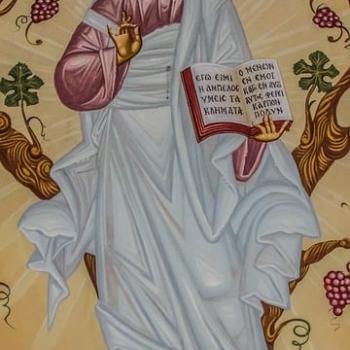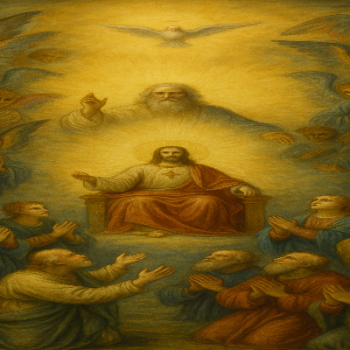
The Church Fathers recognized a unique connection among prayer, faith, and how one lived. One of the Church Fathers, Saint Prosper of Aquitaine, framed it this way, “Lex Orandi, Lex Credendi, Lex Vivendi.” (As we pray, so we believe, so we live).
In this essay, I will examine the nature of this relationship by exploring how prayer influences what we believe and how these two aspects of religious life affect the manner in which we live.
While its definition can vary, it should suffice to say that prayer is the voluntary response to the awareness of God’s presence. This awareness can take several forms, from adoration and thanksgiving to prayers seeking intercession or forgiveness. Moreover, prayer can be public, as in the liturgy, or private, as when reciting the Lord’s Prayer or the rosary in one’s home.
Regardless of the form that it takes, there is, it seems, a circular association between prayer and belief. If prayer is an awareness or response to God, then what we believe about God informs how we pray. If one is a pantheist, his prayer will differ significantly from one who believes in a personal God.
Belief is often used synonymously with faith, and, indeed, there are many similarities. Perhaps the essential difference lies in that belief is an assent to the truth value of a proposition. Faith not only assents to the truth of a proposition but adds the dimension of trust to it. Therefore, to believe in God is to accept the existence of God; faith not only accepts God’s existence but also trusts in God.
Within the relationship between prayer and belief, belief is, in a sense, ontologically prior to prayer. Since prayer requires an object – presumably, one is praying to someone or something – one must have already assented (that is, believe in) the object of one’s prayer. Despite this, Catholicism asserts that it is the grace of God that prompts one to pray. It is the prompting of God that endows and facilitates one’s ability to pray.
In addition, the Church recognizes an epistemological element to faith and prayer. The Catechism puts it this way, “Faith seeks understanding. It is intrinsic to faith that a believer desires to know better the One in whom he has put his faith and to understand better what He has revealed; a more penetrating knowledge will, in turn, call forth a greater faith, increasingly set afire by love. The grace of faith opens the eyes of your hearts to a lively understanding of the contents of Revelation: that is, of the totality of God’s plan and the mysteries of faith, of their connection with each other and with Christ, the center of the revealed mystery. The same Holy Spirit constantly perfects faith by his gifts so that Revelation may be more and more profoundly understood.”
This connection between belief and prayer is poignantly displayed in the ninth chapter of Marks’s Gospel. The story centers on a boy who is thought to be possessed. The boy’s father asks Jesus if He can help. It appears that the only thing preventing the man’s son from being healed is his faith, and the father realizes that he has already shown a lack of faith. His words resonate with all who have struggled with faith, “I do believe; help me overcome my unbelief!”. (See Mark 9:20-25).
The father’s words also illustrate the fluid nature of faith. The fact that one’s faith waxes and wanes over the course of one’s life requires us to persist in prayer and worship. It is here that the Church’s liturgy plays a prominent role.
The liturgy engages belief in a way that simply thinking about God or studying the faith does not naturally do. In other words, in an act of worship, the faithful are in dialogue with God and are engaged in an active and personal relationship with Christ. Moreover, the liturgy and the sacraments are concrete examples of the relationship between prayer and belief.
While it may appear paradoxical, it is evident that belief is buttressed by prayer, and our beliefs inform our prayer. However, what remains to be examined is how prayer and belief inform how one lives.
One of the basic tenets of psychology is that beliefs influence human behavior. Belief and trust in God cannot (or, at least, ought not) exist in isolation. That is to say that faith in God should influence and inform one’s worldview and how one behaves. In turn, this brings us to the credos of the Catholic Church: the Nicene Creed, the Apostles’ Creed, and the Athanasian Creed. It is the creeds that provide the framework of belief in Catholicism.
Belief and prayer provide the foundation for a Catholic’s worldview by infusing the soul with grace. There are several ways that this is manifested.
First, prayer increases grace, allowing the individual to discern God’s will and act upon it. Second, a faith-based worldview influences how we behave and treat others. This includes engaging in the corporal and spiritual works of mercy. Finally, as belief and prayer inform each other so both inform our public or political views. This means such things as working to improve justice and perpetuate peace.
In this paper, I have sought to explain the relationship between prayer and belief. This relationship, formulated by the Church Fathers, “As we pray, so we believe, so we live,” provides the foundation for how Catholics, whether they are religious or lay, are to live.
I would like to conclude by quoting Saint Augustine. “I believe, in order to understand, and I understand, the better to believe.”













